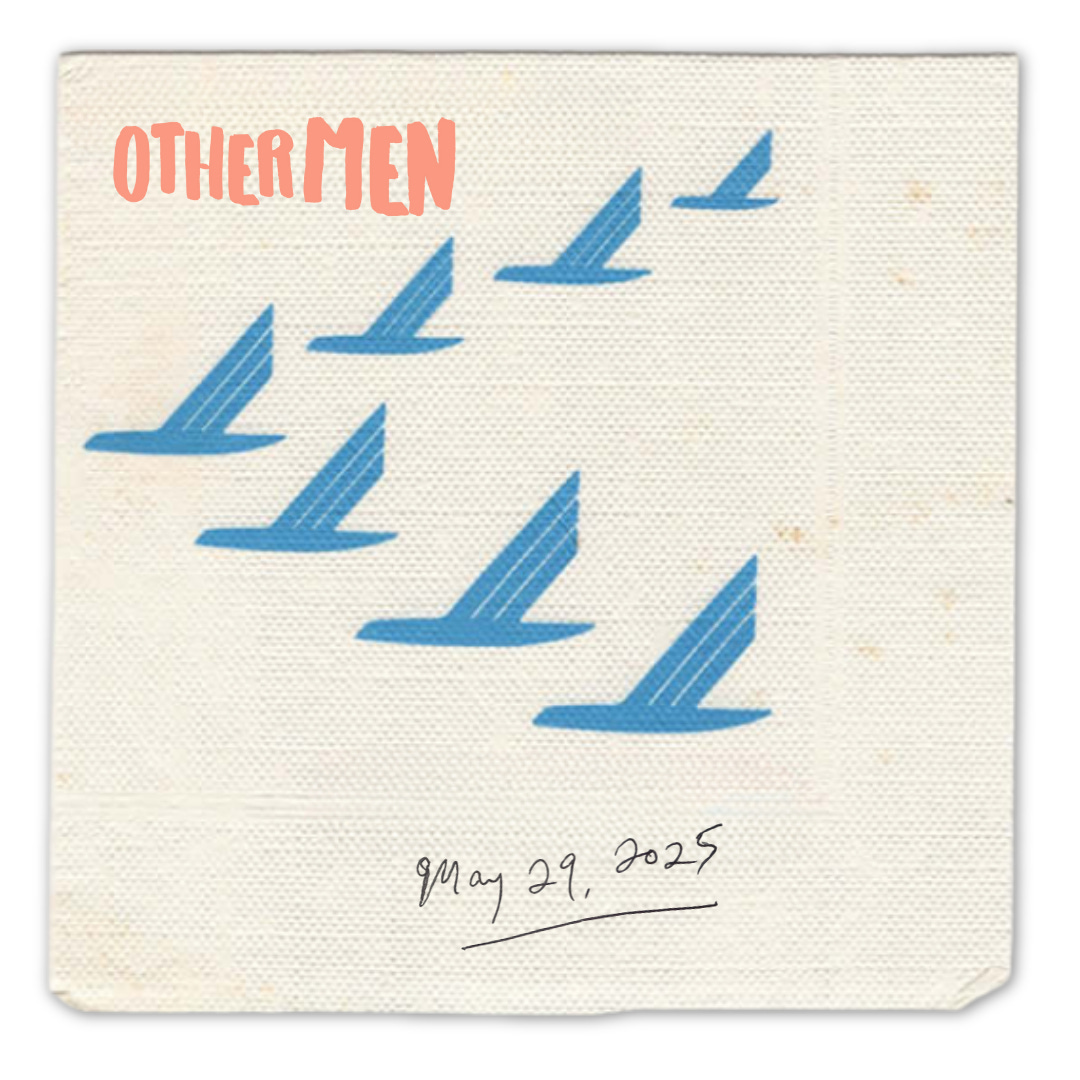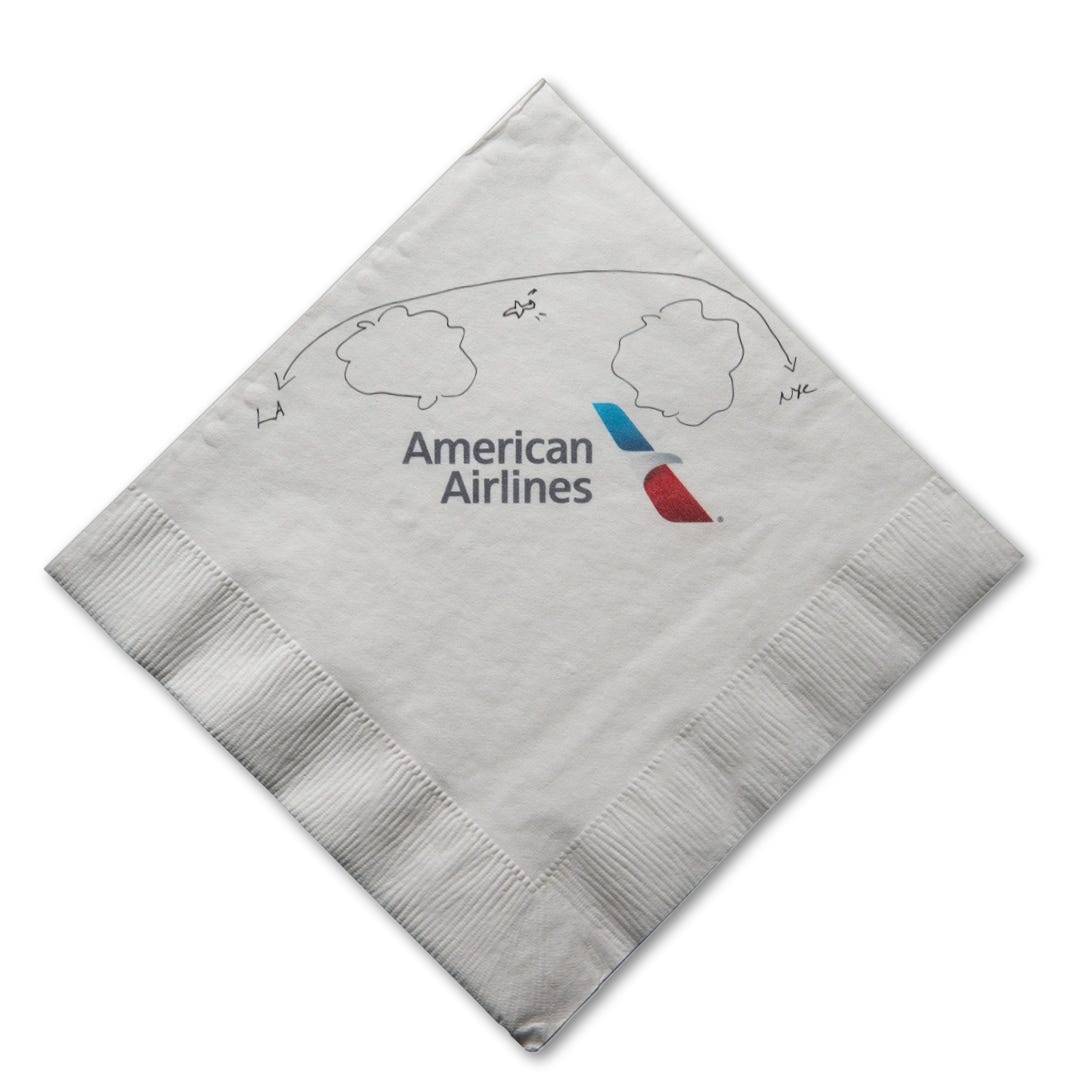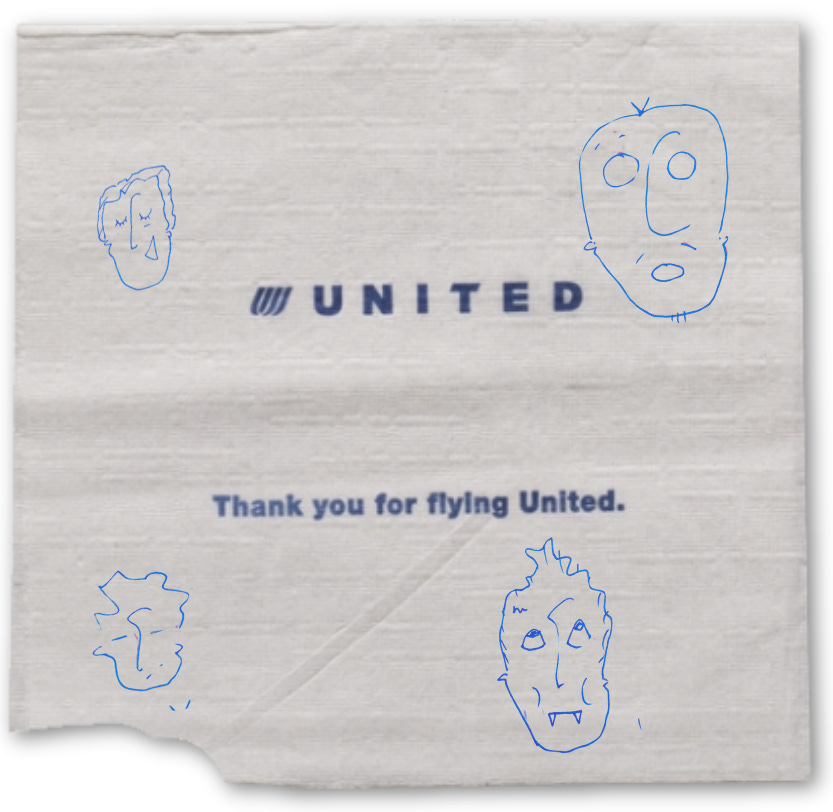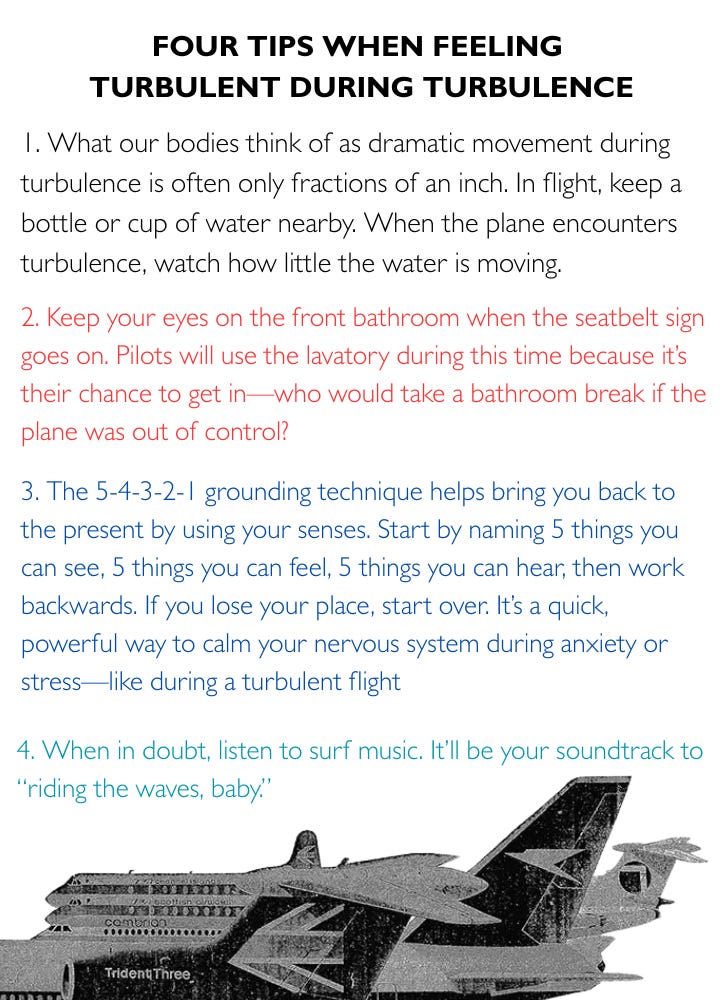Don’t Even F'ing Look at Me (And Other Lies We Tell)
The longest eye contact with a man since childhood.
“Hay ojos que emanan ternura
Y hay ojos de inmenso dolor
Ojos que en noches oscuras
Viven de amarguras y desolación
Pero hay ojos que saben reír
Hay ojos de eterno fulgor
Ojos que ven en las flores
De multicolores
La gracia de Dios”
-Ojos, Rubén Blades
For a short time, I spent my weekends putting a toy airplane in Jell-O.
In my early 30s, flying became less fun. There was no traumatic flight to point to. Instead, one day, I wasn’t afraid, and then—suddenly—I was. I wish it had shown up the way we look at our changes of adulthood, like needing corrective lenses, and then justifying them by going, “God, I’m such a Gemini!”1
No, this anxiety is one I wanted to exchange. I hate this fear.
During any flight, my executive function often kicked in during turbulence—forget about sleeping, let alone concentrating on anything else except the fact that WE ARE DOOMED PEOPLE—DOOMED!
Clinical psychologist and former pilot Tom Bunn recommended experimenting with Jell-O molds. I’ve learned that air becomes thicker the faster we move. If you’ve ever stuck your hand out of a car window and felt the pushback, you’ve experienced how air can act like resistance. Planes reach such high speeds that they become surrounded by pressure—so much so that, by takeoff, the air behaves more like molasses. By cruising altitude, the plane, essentially, is suspended in Jell-O.
I bought a toy 747 at Hudson News in Newark and started submerging it in different Jell-O molds to train my brain. If you shake something suspended in Jell-O, it jiggles—but it doesn’t fall. I crafted around ten molds. The visual helped. I preferred the look of peach.
The most effective antidote I’ve found for a fear of flying comes from a practice rooted in empathic attunement—a term used to describe moments of deep emotional connection. Think: a parent soothing your tears, a friend listening without judgment, someone staying by your side during a difficult appointment. During moments of deep connection, our anti-anxiety hormone, Oxytocin, is released. The effects vary, but they’re all positive, chico—feelings of warmth, trust, and safety.
Flight anxiety expert Bunn teaches a technique where you layer these memories of closeness over stressful moments related to flying. Picture walking through airport security, then instantly recall a moment of deep eye contact with someone who made you feel safe. Imagine takeoff, then quickly switch to that same empathic memory, and so on. The goal is to rewire the fear response—so that when your body encounters a trigger, it floods instead with the oxytocin-based calm of remembered connection. It’s wild how effective it is with practice.
Earlier this month, I was nervous about a forthcoming trip to Los Angeles. Instead of the flight, my nerves were focused on the three days I was going to spend in a room with men and our open emotional wounds. I signed up to attend a three-day workshop with Inside Circle in Santa Monica. The organization was set up to create safe, healing spaces for incarcerated and formerly incarcerated individuals to transform trauma into purpose, empowering system-impacted people to lead change from within and break cycles of violence. Over the last five years, Inside Circle has moved outside of its home in Folsom Prison to provide these workshops to folks “on the outside.” My spouse introduced me to the process and organization through the film The Work, which takes viewers through an intense group therapy process. I’ve rarely had a more visceral viewing experience. I told myself that I’d attend a workshop when the time came. That time was May 2025.
My anxieties, while unrelated to actual air travel, were related to revelations that appeared while practicing my flight anxiety technique.
For this empathic attunement principle to work, I needed to locate a memory where I felt safe—a time when I maintained a deep gaze of trust and warmth with another person. I was annoyed that my only adult memories of intense eye contact occurred during the throws or post-coital bliss of sex. As a child, my sense of safety came from the quiet, tender presence of older men: my Caribbean father, decades older than my mother; his gentle brothers; my kind stepfather; the patient queer elders who looked out for me when I was a reckless, club-hopping teen. As an adult, though—I couldn’t remember times when I’d felt that kind of peace in the eyes of another man.
Occasionally, I lock eyes with a man, and we share an innocuous smile. Sometimes, I see the curious eyes of a fellow well-dressed, short king. Otherwise, sustained eye contact seems to function between men as “wanna fight or fuck?” — a version of “are you game” look in terms of the tussle in question. Jesus, one time, I pulled over to ask a guy for directions in DC. He looked approachable enough, but when he turned around, he had on a shirt that said Don’t Even Fucking Look at Me. (He actually turned out to be pretty nice.)
We know men need connection and healing, but most progress in male mental health seems to happen in "sanctioned spaces of aggression"—the military, sports, prison. It's like we need men to physically destroy each other before we're allowed to help them heal. Combat trauma led to breakthroughs in PTSD research. Athletics exposed the long-term effects of brain injury. Incarceration forced us to confront the link between trauma, addiction, and violence. Only when men are broken do we start funding the fix.
Yet across these systems, a pattern emerges: recovery hinges on community. Group therapies, from surfing with vets to trauma-informed prison programs, all tap into the same truth—healing isn't just internal; it's relational. Research into the oxytocin system reveals that social bonding plays a crucial role in regulating stress and rebuilding emotional resilience. These lessons shouldn't be limited to men in crisis—they should be the baseline for how we support each other in the first place.
I’ve had an aversion to men’s group therapy for some time. If there’s a barrier to entry, it probably lands in the “this is gonna be a drag” or “well, I don’t know if I need this since I already have friends” carry-on bag (Yes, I hear you—what about the eye contact bonding void you mentioned earlier? Congrats on the good memory). The genuine hurdle is that in groups of men, I rarely feel fully myself. I dial down specific needs, dial up the passive dude energy, nod along to football names that aren’t Troy Aikman, and pretend to care deeply about the plot of Inception. Honestly, I’m often just scared of being myself around other men.
When I signed up for a weekend gathering in Santa Monica, what scared me most wasn’t spending time with “tough guys.” It was the emotion waiting for me inside that room.
I am, after all, such an Aquarius.
Of course, the weekend was full of surprises.
My initial shock—I was one of the few who was participating for the first time.
The second big surprise—it was mixed gender. Very mixed gender. The weekend held 70-100 people from all walks of life. On Friday, I arrived to sit in a circle with this large group where we went around, sharing a bit of our backstory and marking an intention for the weekend. From there, we chose a group led by a few facilitators to spend the remaining days with. It is in this room with six other people where we were to do “the work.”
Each day began with a guided eyes-closed exercise, tracking a guiding emotion in the body. Then we’d take turns unpacking that feeling. Some people talked through it. Others did “the work”—a kind of intense, embodied group process designed to move the emotion through.
On day two, it was my turn.
What happened in that room stays there. But I’ll share this: I cried, I yelled—something came out of me. During what felt like an exorcism, I chose two men from the group to serve as surrogates for figures in my life. As I cracked open, they sat there, silent, grounded, taking it all in. Their eyes welled up. They didn’t flinch.
I held eye contact with them longer than I had with any man since I was a kid.
They absorbed what I couldn’t carry anymore.
When we embraced, it felt like what men chase in war or sports: We did it. We’re bonded.
Since returning home, I’ve struggled to fully explain the impact of that weekend — except for this: an unmistakable reminder of men’s profound capacity to hold space for one another.
The facilitators told us to take it easy on the Monday after our workshop. I took the day off work and arrived at LAX early to sit and read for a few hours.
On the flight home, I fell asleep.
Adios, ciao ciao, byeeeeeeeee,
Mark✌🏼
Liked what you read? Click Share and/or the ❤️ button! It helps more people find Other Men and is a swell way to show your support.
Substitute with “I’m so Irish!” “I’m such a Gilmore girl!” “I’m such a person with eyes!”






